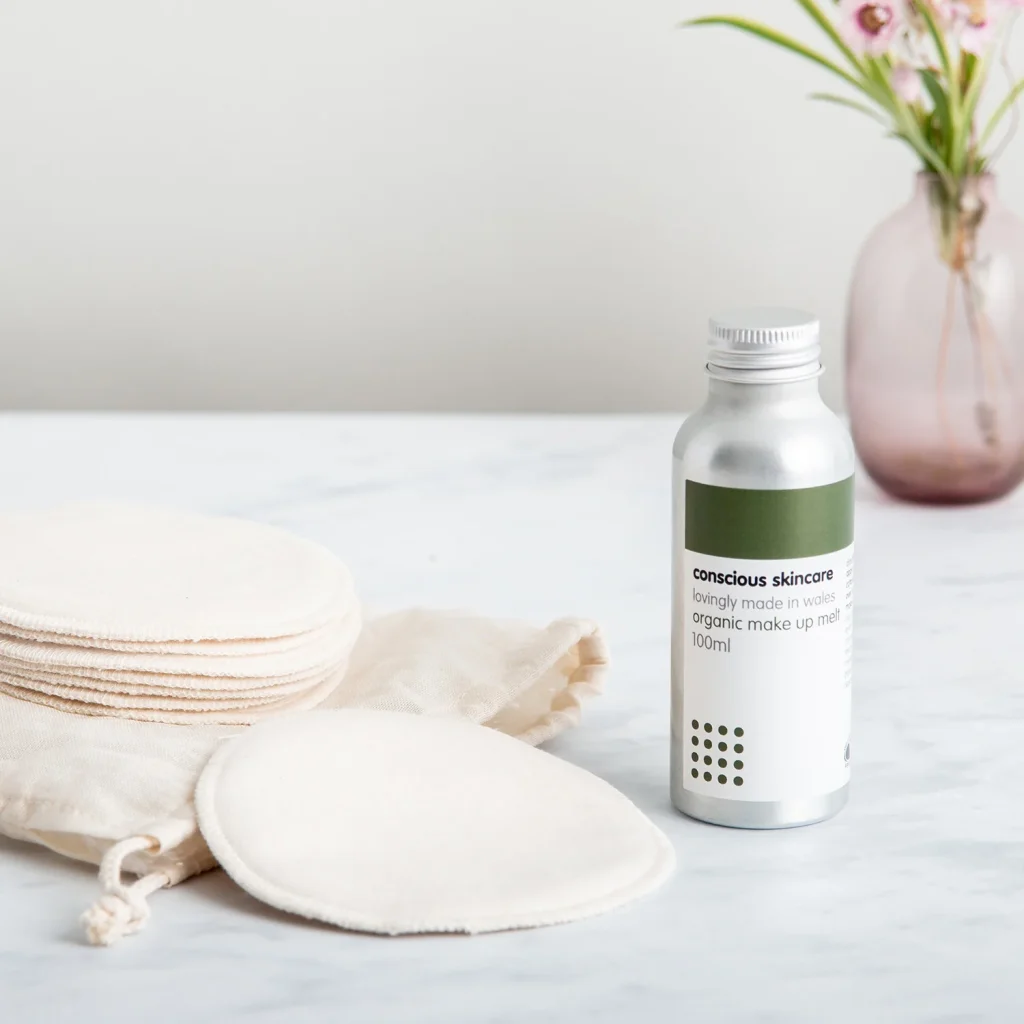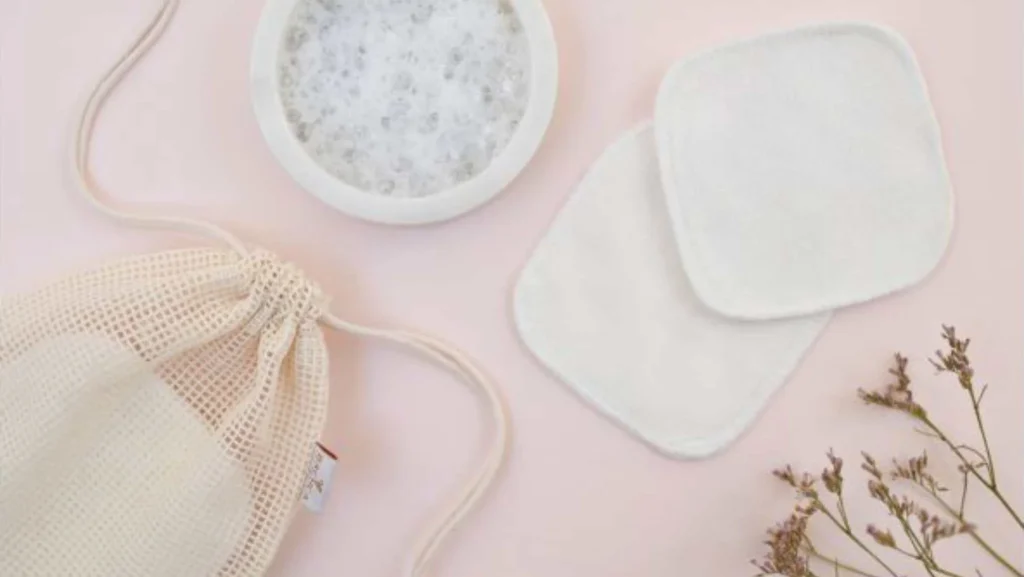I get anxious when people start talking about zero-waste beauty because I just can’t do it yet. My cortisol is up right now because images of plastic bottles, non-recyclable pump mechanisms, plastic wrap, and single-use products and packaging are all pinging around in my brain, and guilt is jacking up my heart-rate.
Worse, I have several re-useable makeup remover pads (sent as props with PR packages), and I haven’t really switched to them, so mangled, mascara-stained cotton rectangles are part of the debris whirlpool in my head.

You’ve seen little pads like this, yes? They’ve very quickly grown in popularity as a save-the-earth beauty alternative; marketing sometimes includes helpful statements like “lasts for 1000 uses.”
Yet I’m still using my beloved Shiseido cotton facial pads – I stock up when they’re on sale, so I have quite the stash to get through. But although I haven’t managed to break my facial-cotton habit, I have bent it a little. Rather than use reusable pads to remove makeup or apply acids, I use them only to blot thermal water from my skin after cleansing (I drench my face in thermal water to rinse after using micellar cleanser).
Part of the reason is that I have maybe 11 re-useables; I need to buy a whack more so I can sync up with my laundry sessions (machine fees in my apartment building are $2.50 per wash). Sure, I could clean them by hand, but that seems wasteful when I can put them in a sheets-and-towels laundry load. (#thatsmystoryandimstickingtoit)
Softer than most washcloths yet surprisingly sturdy, the handmade-in-Canada Marie Fil Creations set in the above images are constructed of two layers, one of hemp and one of organic cotton. One side has a subtle woven texture, the other is subtly nubby.
Other brands are made of some kind of microfibre, and most of what’s available on Amazon seems to be made of bamboo. Many a sales blurb claims the bamboo rounds are “organic” or “chemical-free,” perhaps to suggest that the bamboo fibres themselves have been produced without the intense chemical-solvent processing that completely undermines the eco-friendly and biodegradable profile that bamboo rayon manufacturers cultivated in its early years. (Bamboo fibres can instead be processed via crushing the stalks and employing enzymes to break the material down into something that can then be fashioned into linen-like fabric. However, that process is pricier, and from unfamiliar brands it’s hard to know exactly what you’re getting, especially from a retail platform like Amazon.)

My Marie Fil reusable cleansing pads come in a nice little travel-friendly fabric envelope with a plastic snap closure. The set I received as a PR prop contains six pads, but sets of nine and 30 are also available; they come in black as well.
Some of the sets I found on Amazon include zippered mesh wash bags as well as drawstring pouches for storage, and handy cleansing-mitt options as well as rounds. (See what I did there?) I’m tempted, but wary because the one that caught my attention is made of bamboo and how it was processed isn’t clear.
When I finally start using these pads with micellar cleanser, eye-makeup remover and acids, I’m sure staining will eventually bother me. (Marie Fil has a stain-remover bar I’m considering.) But really, better staining that bothers me than more single-use cotton in a landfill, right?
Have you managed to switch to reusable cleansing material, whether washcloth or makeup remover pads like these? How do they work for you? If you haven’t switched, do you think you might?